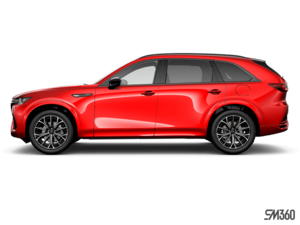Understanding the Size Differences Between the 2025 Mazda CX-70 and CX-90 PHEV Models
November 01 2024,

Mazda’s 2025 lineup includes the plug-in hybrid variants of the CX-70 and CX-90, two SUVs with shared engineering but distinct physical dimensions. Both vehicles leverage Mazda’s e-Skyactiv PHEV technology and i-Activ all-wheel drive, but their size differences cater to varying preferences and needs. Here’s a detailed comparison of their physical attributes, focusing solely on dimensions and space.
Exterior Dimensions
Length and Wheelbase
Both SUVs share an identical overall length of 5,100 mm and a wheelbase of 3,120 mm’ providing a balanced design and optimal interior space. However, their exterior styling details, such as roofline slopes and trim variations, give each a unique aesthetic.
Height and Ground Clearance
The height of the CX-70 is 1,733 mm, while the CX-90 measures slightly taller at 1,745 mm with the shark fin antenna. Ground clearance is comparable, with the CX-70 offering 204 mm and the CX-90 providing 206 mm, ensuring capable performance across varied terrains.
Width
Both models have an overall width of 2,157 mm, measured with mirrors in the driving position, giving them a confident stance on the road. This dimension ensures stability without compromising maneuverability.
Interior Space
Seating Configurations
The CX-70 has a two-row, five-seat layout, making it ideal for those who prioritize cargo space over additional seating. In contrast, the CX-90’s standard three-row configuration, depending on the trim, allows for seven or eight seats, making it better suited for larger families or groups.
Legroom and Headroom
The front-row legroom is identical at 1,058 mm, while second-row passengers enjoy 1,000 mm in both models. The CX-90’s third row offers 773 mm, making it practical for bringing along more friends or family members. Headroom in the CX-70 measures 996 mm in the front (with the moonroof) and 981 mm in the rear, whereas the CX-90 provides slightly more, with 1,008 mm in the front and 997 mm in the second row.
Cargo Capacity
Cargo volume is where these SUVs significantly diverge. The CX-70 offers 1,131 litres behind the second row and up to 2,147 litres with the rear seats folded. Meanwhile, the CX-90’s additional seating impacts its cargo space, providing 423 litres behind the third row, 1,133 litres behind the second, and 2,101 litres with all rear seats down.
Conclusion
The 2025 Mazda CX-70 and CX-90 PHEVs, through their size and design, cater to different needs. The CX-70 is tailored for individuals or smaller families seeking generous cargo space and a two-row layout, while the CX-90 excels in accommodating larger groups with its three-row seating configuration. These distinctions ensure that Mazda’s PHEV lineup offers versatile options to meet diverse lifestyle requirements.






